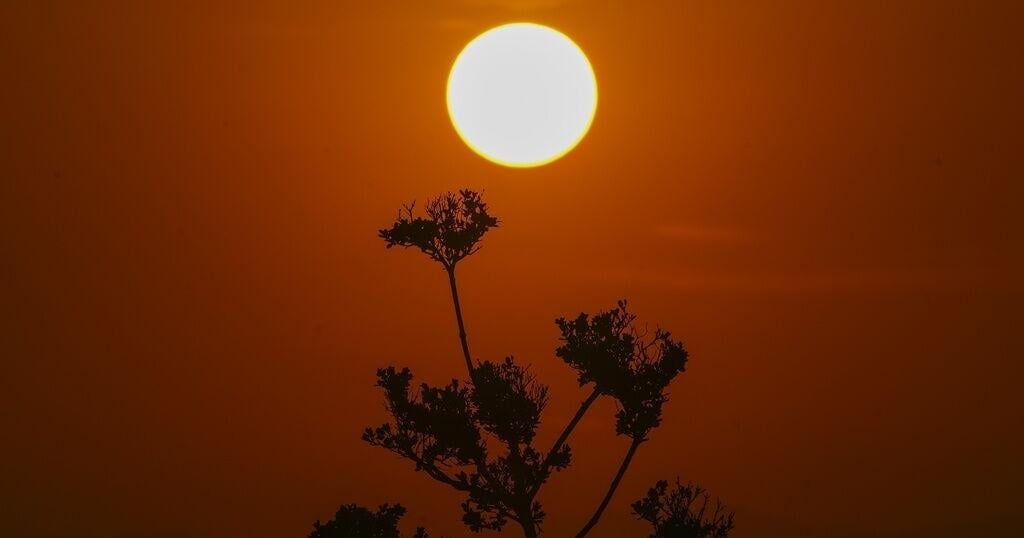The house rocked as though an earthquake had struck, and suddenly it was floating. Water seeped in through the front door, and waves smacked the big glass window. From the lone dry room where Alexie Stone and his brothers and children gathered, he could look outside and see under the water, like an aquarium.
A shed drifted toward them, threatening to shatter the glass, but turned away before it hit. The house came to rest just a few feet away from where it previously stood, after another building blocked its path. But it remains uninhabitable, along with most of the rest of Stone’s Alaska Native village of Kipnuk, following an immense storm surge that flooded coastal parts of western Alaska, left one person dead and two missing, and prompted a huge evacuation effort to airlift more than 1,000 residents to safety.
“In our village, we’d say that we’re Native strong, we have Native pride, and nothing can break us down. But this is the hardest that we went through,” Stone said Thursday outside the Alaska Airlines Center, an arena in Anchorage, where he and hundreds of others were being sheltered. “Everybody’s taking care of everybody in there. We’re all thankful that we’re all alive.”
The remnants of Typhoon Halong brought record high water to low-lying Alaska Native communities last weekend and washed away homes, some with people inside. Makeshift shelters were quickly established and swelled to hold about 1,500 people—an extraordinary number in a sparsely populated region where communities are reachable only by air or water this time of year.
Bryan Fisher, the director of the Alaska Division of Homeland Security and Emergency Management, told CBS News on Thursday that this was one of the largest disasters the state has ever dealt with. Alaska Gov. Mike Dunleavy announced on social media Thursday evening that he submitted a request to the White House asking that President Trump issue a disaster declaration for the region.
Many of the evacuees were flown first to Bethel, a regional hub of 6,000 people. But authorities sought to relocate them as shelters there approached capacity. Stone and his family spent several nights sleeping on the floor of the Kipnuk school library before being flown to Bethel and then on to Anchorage, about 500 miles east of the villages. They arrived strapped into the floor of a huge military transport plane with hundreds of other evacuees.
Another military plane carrying evacuees was due to arrive at Joint Base Elmendorf-Richardson on Thursday evening.
The hardest-hit communities, Kipnuk and Kwigillingok, saw water levels more than 6 feet above the highest normal tide line. Some 121 homes were destroyed in Kipnuk, a village of about 700 people, and in Kwigillingok, three dozen homes drifted away. Cellphone service had been restored in Kwigillingok by Thursday, authorities said, and restrooms were again working at the school there, where about 350 people had sheltered overnight Tuesday.
Damage was also serious in other villages. Water, sewer, and well systems were inoperable in Napaskiak, according to a statement from the Federal Emergency Management Agency.
Jeremy Zidek, a spokesperson with the state emergency management office, said he did not know how long the evacuation would take and said authorities were looking for additional shelters. The aim is to get people from congregate shelters into hotel rooms or dormitories, he said.
Fisher also told CBS News Thursday that, while some of the flooding hit a record level, the weather forecasting was accurate, and they received the normal weather predictions and had the right data, regardless of the reported cuts to weather balloons or other projects. Fisher said cuts to public radio and TV did not affect communication.
He acknowledged that communication was hampered after the storm, but Alaska’s KYUK and KOTZ, two public radio stations, were up and broadcasting.
While still in Kipnuk, Stone spent his days trying to help out, he said. He would make trips to the airport to pick up water or food that had been sent by other villages, and deliver it to the school. He worked to help rebuild the boardwalks on which residents get around. And when he had time, he would return to his battered house, trying to clean up some of the waterlogged clothing and electronics the floodwaters had tossed about.
But the damage is extensive. Fuel and stove oil leaked from tanks, and the odor of petroleum permeates the entire town, he said. Like other villagers in the region, his family lost stores of food intended to help them get through the winter—the refrigerator and three freezers full of halibut, salmon, moose, and goose.
Stone’s mother, Julia Stone, is a village police officer in Kipnuk. She was working at the school last weekend when the winds suddenly picked up, people began arriving at the building, and her on-call police cellphone began ringing with calls from people in need—some reporting that their houses were floating.
She tried to reach search and rescue teams and others to determine if there were available boats to help, but the situation was “chaos,” she said. Her voice broke during an interview Thursday in Anchorage as she thanked those at the school who helped with the response.
“It’s a nightmare what we went through, but I thank God we are together,” she said.
Stone said he evacuated with the clothes on his back. Most of the rest of what he owned was soaked and reeked of fuel. The Red Cross provided cots, blankets, and hygiene supplies in Anchorage, he said, and he went out to a thrift store on Thursday to get more clothes: two shirts, a sweater, two pairs of pants, and tennis shoes.
He is not sure when it might be safe to return to Kipnuk.
“Everybody here that came from Kipnuk, they’re pretty strong,” Stone said. “If we have to start over, we have to start over.”
https://www.cbsnews.com/news/alaskan-evacuees-describe-fleeing-storm-ravaged-coastal-communities/
